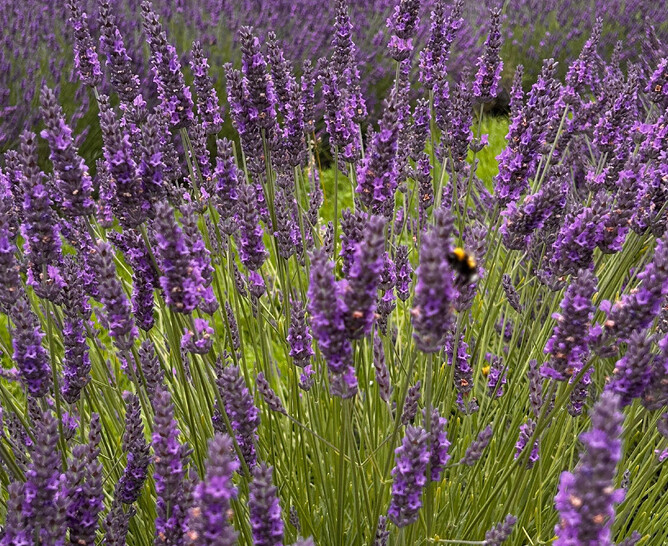Lavender, with its fragrant blooms and endless uses, is a total game-changer for your garden or balcony. Beyond its Insta-worthy looks, lavender is a secret weapon for your wellness routine. Its chill vibes can help you stress less and sleep better, making it a must-have for your self-care Sundays. You can even use it to make refreshing DIY sprays or soothing bath salts. Whether you’re into self-care, creating a serene home, or just love the idea of growing your own natural remedies, lavender has you covered. It’s also pretty easy to care for, making it a great pick for both new and experienced gardeners. Here’s everything you need to know to get started.
Best Growing Conditions
Lavender loves sunny spots with soil that drains really well. It prefers a warm, dry climate, so aim for full sun—at least 6-8 hours a day. The soil should be slightly alkaline, with a pH of 6.5 to 7.5 to help the plants absorb nutrients effectively. A sandy or loamy texture is ideal because it allows water to drain quickly while still holding enough moisture for the roots. This helps keep lavender’s roots healthy and prevents issues like root rot. (If you’re wondering, loamy soil feels crumbly and is a mix of sand, silt, and clay that holds moisture but drains well.) Stay away from heavy, sticky clay soil or areas that stay damp, as lavender doesn't like wet feet.
Not sure about your soil’s drainage? Try this: dig a small hole, fill it with water, and see how fast it drains. If the water’s still there after a few hours, you’ll need to fix the soil by adding sand or planting in raised beds.
Lavender thrives in pots too! Go for a container that’s at least 30 cm wide and deep—perfect for its root system to stretch out. Containers let you control the soil and move your plants to sunny spots as needed. Just make sure the pot has good drainage holes. Terracotta pots are a great option because they allow the soil to dry out quickly, which is perfect for lavender.
When to Plant Lavender
The best time to plant lavender is in spring, after the last frost, or in autumn. It's a good idea to give the plant plenty of time to settle in before winter.
How to Plant Lavender
Pick the Perfect Spot: Find a sunny area with well-draining soil. If your soil tends to hold water, consider planting in raised beds or mixing in sand or gravel to help with drainage. Lavender also loves a bit of airflow.
Prep the Soil: Dig a hole that’s twice as wide as the plant’s root ball. Mix in a little compost, but don’t go overboard—lavender does better with lean soil.
Plant It Right: Place the lavender plant in the hole so the top of the root ball is even with the ground. Fill the hole back in and gently press the soil around the roots. Don’t bury the crown (where the stems meet the roots), as that can lead to rot.
Give It Space: Lavender plants need room to breathe. Space them about 60-90 cm apart to avoid crowding, which helps prevent disease. Of course, if you want to create a hedge, they’ll need to be closer.
Water Wisely: Water the plant well right after planting, but let the soil dry out between waterings. Lavender hates being overwatered - so water deeply but less often. Once it’s settled in, it’s drought-tolerant and only needs a deep drink during really dry spells.
Tips for Success
Trim your lavender every year to keep it looking fresh and gorgeous, while encouraging new growth. Use clean, sharp pruning shears and trim back about one-third of the plant’s height, focusing on removing woody stems and spent flowers. The best time to prune is in early spring or after it’s bloomed and the flowers have withered.
Use gravel or small stones as mulch instead of organic materials like wood chips. This helps keep the roots dry and warms the soil, mimicking lavender’s natural habitat.
Lavender is a bee and butterfly magnet! Plant it near your veggie garden or fruit trees to boost pollination.
With a little care, lavender will fill your garden with its beauty, amazing scent, and tons of practical uses. Enjoy the journey, and happy planting!



